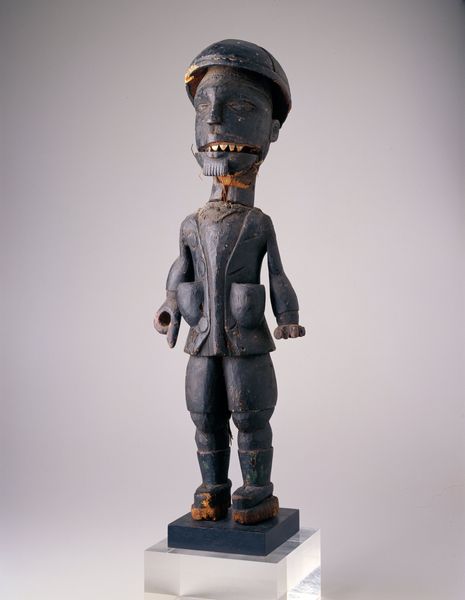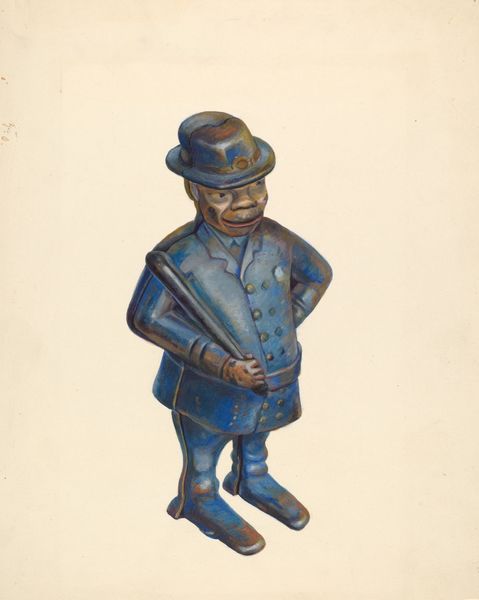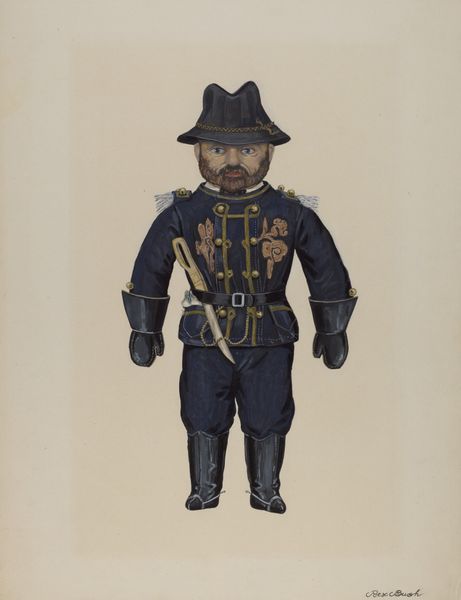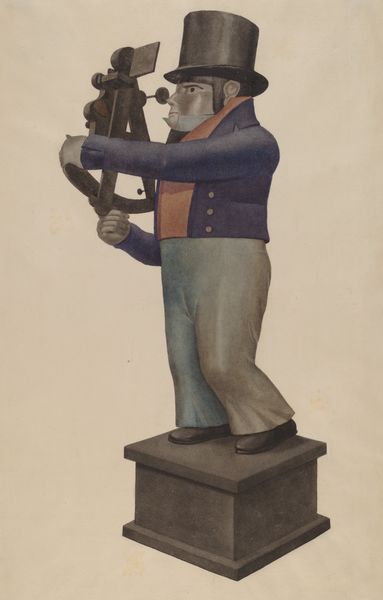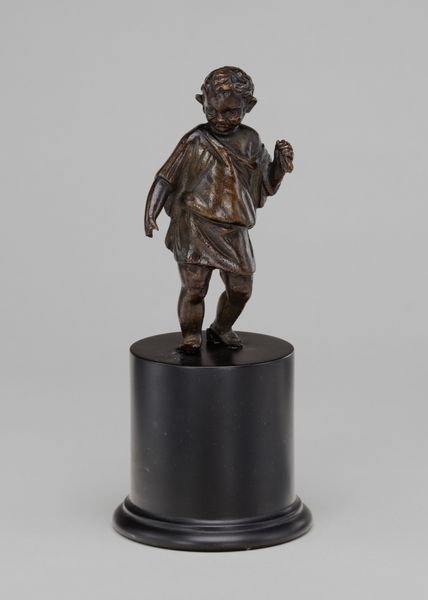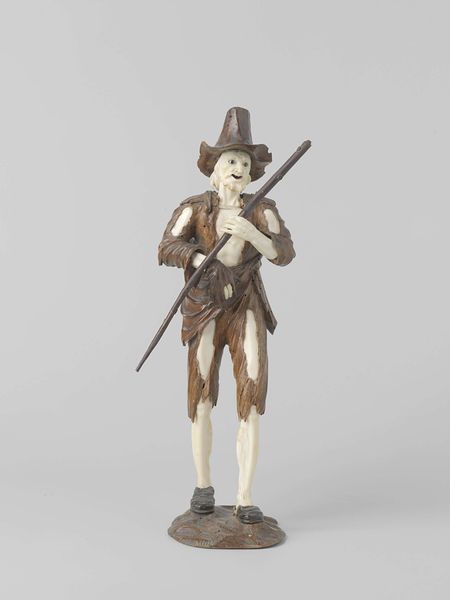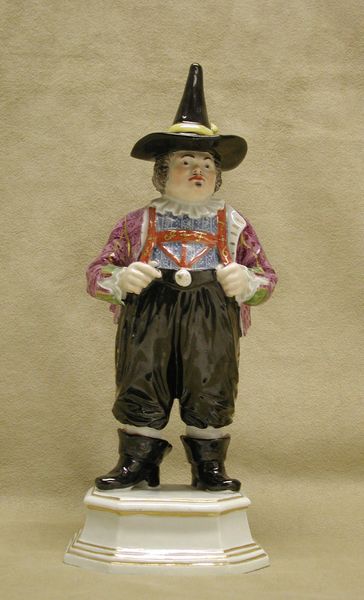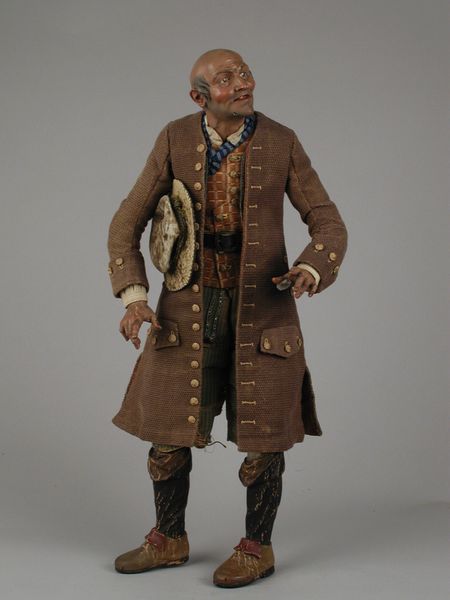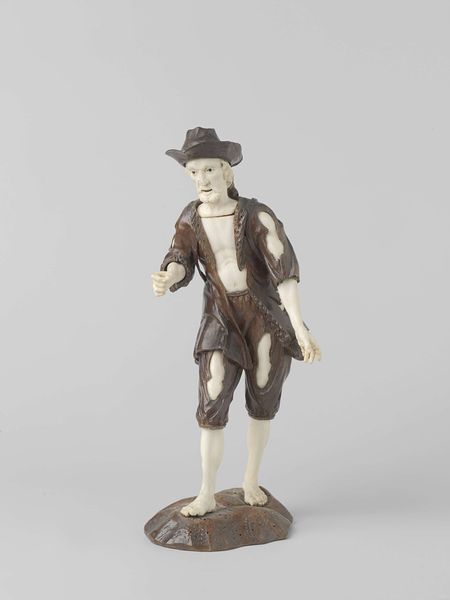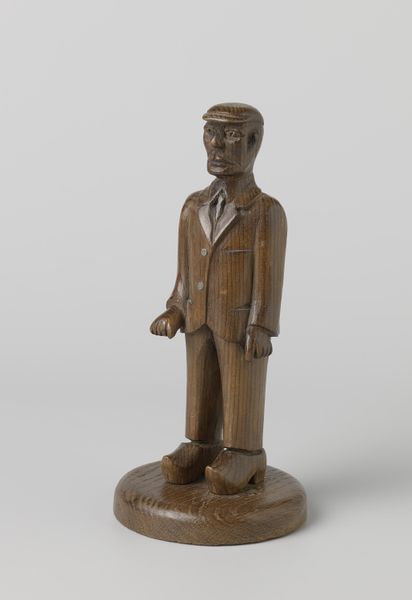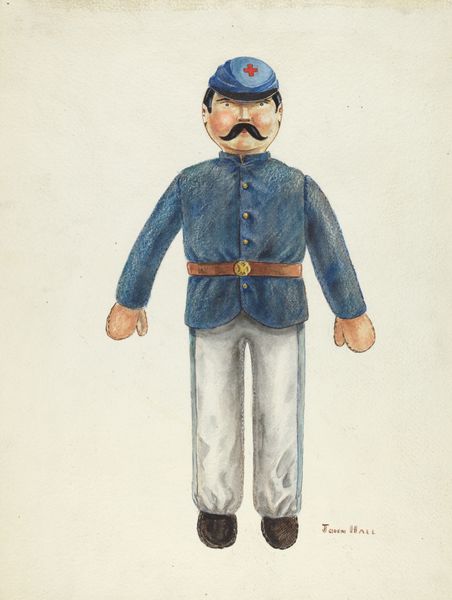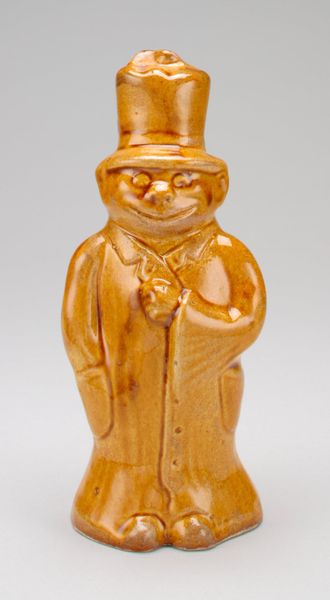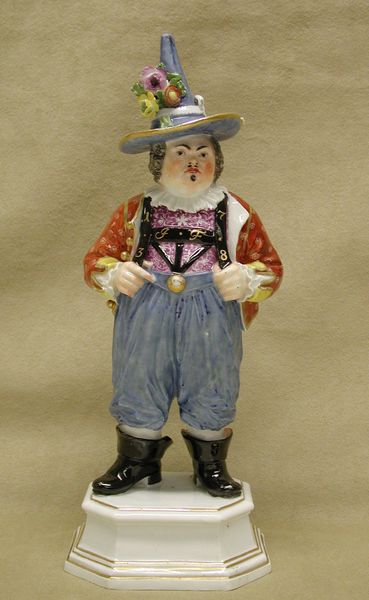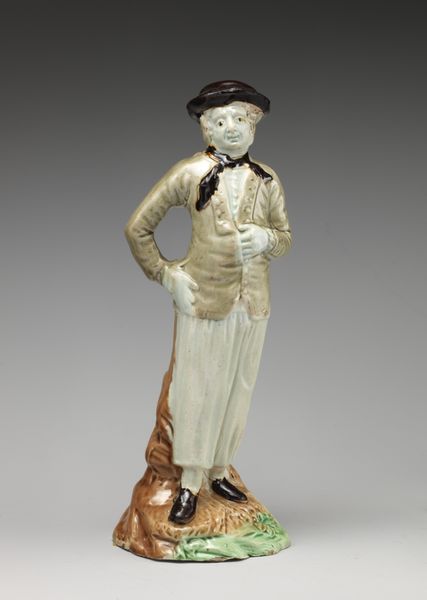
-Mulligan (or Policeman)- still bank c. 1905 - 1932
0:00
0:00
pigment, metal, found-object, sculpture
#
portrait
#
pigment
#
metal
#
found-object
#
figuration
#
sculpture
Dimensions: 5 15/16 x 2 7/8 x 2 1/8 in. (15.08 x 7.3 x 5.4 cm)
Copyright: No Known Copyright
Curator: This is the "Mulligan (or Policeman) - still bank", crafted by the A.C. Williams Company, dating from approximately 1905 to 1932. It’s a small sculpture fashioned from metal and pigment, currently residing here at the Minneapolis Institute of Art. Editor: My immediate impression is... unsettling. There's something about the worn paint and rigid stance that evokes a sense of faded authority, perhaps even vulnerability, despite its intent as a symbol of order. Curator: The figure, representing a policeman, reflects early 20th-century social values and perhaps a naive aspiration towards law and order. These "still banks", functioning as both toys and savings devices, were commonplace in households. Editor: The act of saving money *in* the figure of a policeman adds an interesting layer, doesn't it? Was this about instilling respect, even fear, of authority from a young age? I see potential narratives around the political undertones of something like this. Curator: It is complex. While seemingly benign, the piece embodies a cultural moment steeped in class dynamics, immigrant experiences, and the evolving role of policing in American society. The mass production also made this readily accessible. Editor: Right. It highlights how quickly objects associated with social control become commonplace. And seeing it now, knowing the history of policing in America, I wonder who it represented safety for, and whose safety it compromised. The missing paint around the face contributes to the unease. Curator: Precisely, its present display encourages these conversations. Though a utilitarian and familiar form for many at that time, its legacy isn’t neutral, encouraging the deconstruction of our assumed innocence in everyday objects. Editor: Absolutely, considering what we now know, it acts as a stark reminder. By examining its materiality and context, we can discuss ideas surrounding childhood, authority, social representation, and their inherent biases. I am certain many modern children would see the heavy handed implication here, compared to what they would have once perceived as good, harmless fun. Curator: I agree. It embodies the power of institutions. An exploration of material culture reveals just how subtly societal norms become ingrained, highlighting art's power as a tool for critical consciousness. Editor: Yes, the figure invites an inquiry into representation itself. How do symbols of power function in the everyday, and what narratives do they obscure? This is worth the conversation, no matter how uncomfortable the piece might initially seem.
Comments
No comments
Be the first to comment and join the conversation on the ultimate creative platform.
